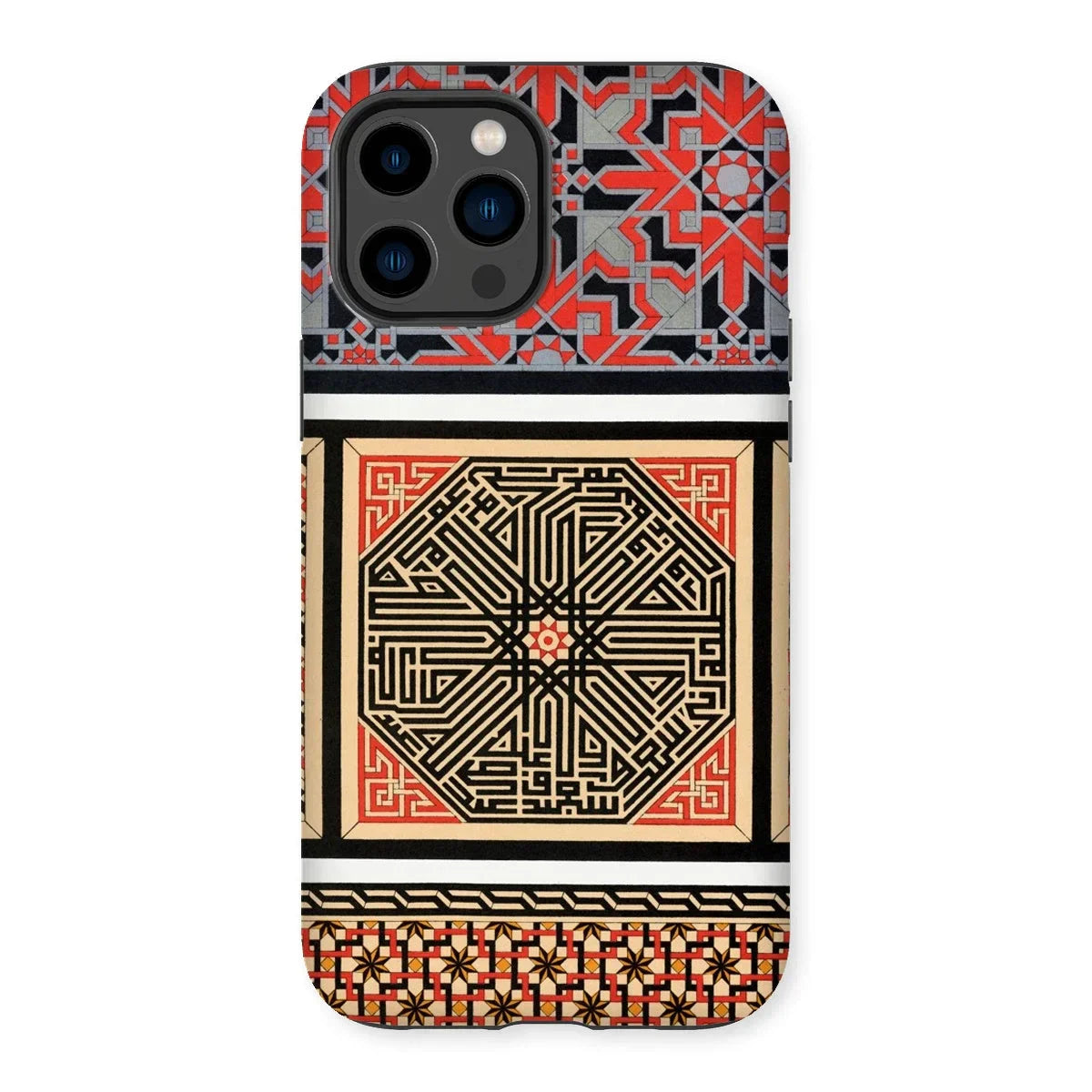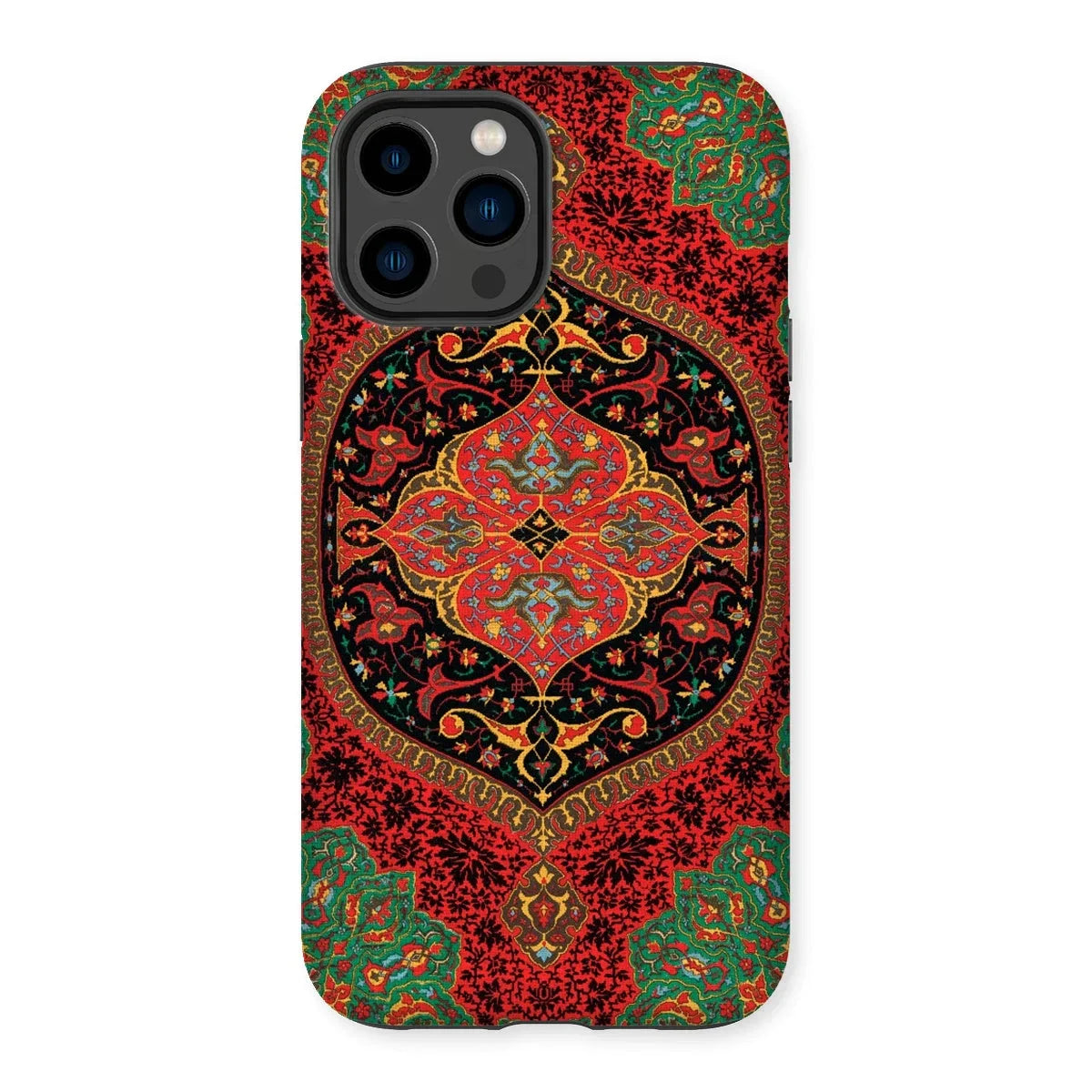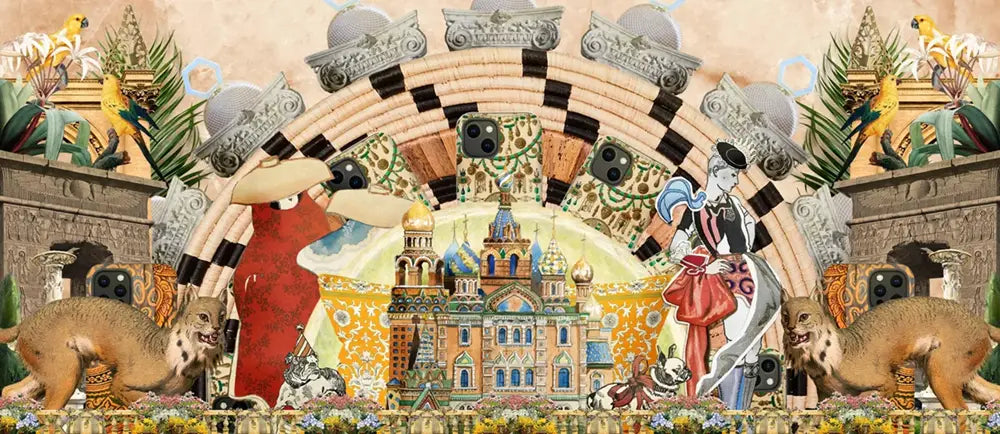Embark on a digital pilgrimage with these Islamic art phone cases, where every swipe and tap becomes a sacred ritual in the palm of your hand. These Islamic phone cases aren't just protective shells; they're portable prayer rugs for your smartphone, each one a miniature mihrab pointing you towards the qibla of style.
Imagine intricate tessellations dancing across your device. A feast for the eyes, serving up a smorgasbord of Arabesque geometric patterns that would make Ibn al-Haytham's head spin. Transforming your smartphone into a handheld haram of heavenly aesthetics. Picture the star polygons of Moroccan zellij tile work spiraling into infinity, or the intricate floral motifs of Ottoman illumination in bloom.
Each Islamic iPhone case is a rebellion against the bland tyranny of minimalism, a vibrant declaration that even in our digital age, the timeless beauty of Islamic Arabesque art refuses to be silenced. Crafted with the precision of a master calligrapher and the durability of Damascus steel, these cases don't just protect your phone; they elevate it to the status of a cultural artifact.
So let your device become a beacon of beauty in a sea of digital monotony, a pocket-sized portal to the golden age of Islamic artistry that proves, beyond a shadow of a doubt, that paradise isn't just a promise for the afterlife – it's right here in your hand, one Arabesque wonder at a time.
FAQs
About this collection
What are the 4 types of Islamic art?
What are the main themes in Islamic art?
What do colors symbolize in Islamic art?
What do patterns symbolize in Islamic art?
Why doesn't islamic art include humans or animals?
When did islamic art begin?
Where can my order ship to?
Any treasure you find here can be shipped to:
North America
Canada, Mexico, Continental United States
South America
Argentina, Brazil
Europe
Albania, Andorra, Austria, Belgium, Bosnia & Herzegovina, Bulgaria, Croatia, Cyprus, Czechia, Denmark, Estonia, Faroe Islands, Finland, France, Germany, Gibraltar, Greece, Greenland, Guernsey, Hungary, Iceland, Ireland, Isle of Man, Italy, Jersey, Kosovo, Latvia, Liechtenstein, Lithuania, Luxembourg, Malta, Monaco, Montenegro, Netherlands, North Macedonia, Norway, Poland, Portugal, Romania, San Marino, Serbia, Slovakia, Slovenia, Spain, Sweden, Switzerland, United Kingdom, Vatican City
Middle East & Asia
Hong Kong, India, Indonesia, Israel, Japan, Lebanon, Malaysia, Philippines, Singapore, South Korea, Taiwan, Thailand, Türkiye, United Arab Emirates, Vietnam
Africa
South Africa
Oceania
Australia, New Zealand
—
Every order tracked so you can watch your treasure move from A to B to You.
Sent carbon neutral at no extra charge. Helping you gain peace of mind your money's being kind.
Orders to the rest of the world are coming as soon as I can!
How much will shipping cost?
Free shipping for orders over $50
$5-10 shipping for orders less than $50
When will my order arrive?
Average order processing:
1-4 days. Over 65% of orders get shipped in 72hr and over 90% in 5 business days or less.
+
Average shipping times:
USA: 2-5 days — Canada: 3-8 days — UK: 2-5 days — Europe: 3-6 days — Australia: 2-5 days — New Zealand: 3-8 days — Rest of the world: 2-4 weeks
Can I return my order?
1. You're welcome to open a return / exchange request within 30 days of your order's delivery. All items for return must be delivered back in their original condition, with their original packaging included.
2. No guarantees your return will be approved if you send items back to before the approval of your return request
3. No returns, refunds or exchanges on discounted or sale items
Learn more about my step-by-step returns process.







































